Introduction to Unstructured Text Data
So far we have primarily been focused on either collecting and curating data, or exploring it using data visualization and descriptive statistics. But a huge part of working with cultural data is actually analyzing it.
To do that though requires understanding how computational methods can help us find patterns and outliers in cultural data.

We will be discussing the graph above more in class, but this is from one of our readings by Ted Underwood that discusses how humanists are using computers to understand text, which helps us get a sense that there is a wide array of options (and remember this was published in 2015, so there are even more options now).
Part of being able to analyze cultural data is understanding the different types of data that we might encounter. In this lesson we will be focusing on unstructured text data and how we can structure it for analysis.
Unstructured Data
When working with data, you’ll often come across the terms “structured” and “unstructured” data. There are lots of definitions online, like this graph below:

This graph is technically correct, but it is also a bit confusing when you think about it (even highly organized data can be difficult to analyze for example and why can’t things like email be analyzed in spreadsheets?).
Let’s compare our two datasets that we have been working with so far: the Film Dialogue dataset and the Humanist Listserv dataset.
In our Film Dialogue datasets, we have technically four separate spreadsheets with the following columns:
Public Script Sources - public_scripts.csvwithfilm_scripts_df:
imdb_id |
script_id |
title |
year |
gross_ia |
link |
|---|---|---|---|---|---|
| tt0019777 | 4031 | The Cocoanuts | 1929 | nan | http://www.pages.drexel.edu/~ina22/splaylib/Screenplay-Cocoanuts,_The.pdf |
character_list5.csvwithcharacter_list_df:
script_id |
imdb_character_name |
words |
gender |
age |
|---|---|---|---|---|
| 280 | betty | 311 | f | 35 |
character_mapping.csvwithcharacter_mapping_df:
script_id |
imdb_id |
character_from_script |
closest_character_name_from_imdb_match |
closest_imdb_character_id |
|---|---|---|---|---|
| 1 | tt0147800 | bianca | bianca stratford | nm0646351 |
meta_data7.csvwithmetadata_df:
script_id |
imdb_id |
title |
year |
gross |
lines_data |
|---|---|---|---|---|---|
| 1534 | tt1022603 | (500) Days of Summer | 2009 | 37 | 743544525677477444334257777565774443444456445674543367553452777734237544553444343334444444467441433777777777777776634344344434244343433435535624644435776576434333377775756764434344466346764533566544444777533356445543543343334444535476332345777777777777776 |
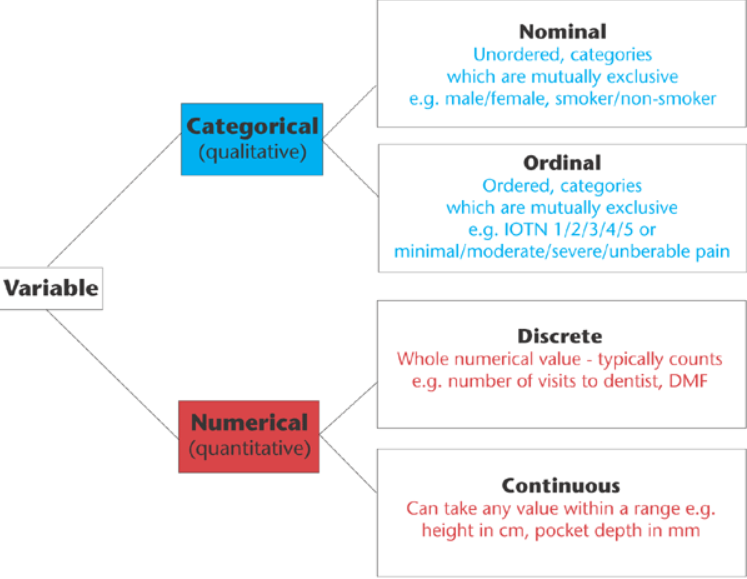
In our last lesson, we explored how some of the values in these spreadsheets are categorical values (like gender as a nominal category – that is a discrete unordered categories) and how some are numerical values (like gross or lines_data). And finally how some are a bit in between, like year which is technically represented as a number and we could treat it as either a continuous or discrete value (so for example, if it is a date that is continuous, but if it is a year it is discrete), or we could treat it as a categorical value that is ordinal (i.e. is a category with an implied order).
The big thing to takeaway from looking at these datasets though is that all these values are structured. We do not need to do any processes to turn these values into data to analyze. We might group them, we might filter them, we might fill in missing values, and we can plot them – but essentially this is a dataset ready to be analyzed.
Let’s compare that to our Humanist listserv dataset that you created from our Curating the Humanist Dataset Assignment.
Here’s my code in this toggle:
import requests
from bs4 import BeautifulSoup
import pandas as pd
import numpy as np
# subset to relevant urls
humanist_urls = ["https://humanist.kdl.kcl.ac.uk/Archives/Converted_Text/", "https://humanist.kdl.kcl.ac.uk/Archives/Current/"]
volume_dfs = []
# loop through each url
for url in humanist_urls:
print(f"Getting volumes from {url}")
response = requests.get(url)
soup = BeautifulSoup(response.text, "html.parser")
links = soup.find_all('a')
# loop through each volume link
for link in links:
if link['href'].endswith('.txt'):
print(f"Getting volume from {url + link['href']}")
page_soup = BeautifulSoup(requests.get(url + link['href']).text, "html.parser")
text = page_soup.get_text()
volume_link = url + link['href']
dates = link['href'].split('.')[1]
data_dict = {'volume_text': text, 'volume_link': volume_link, 'volume_dates': dates}
volume_dfs.append(data_dict)
scraped_humanist_df = pd.DataFrame(volume_dfs)
# Extract the volume number from the dates
scraped_humanist_df['volume_number'] = scraped_humanist_df['volume_dates'].str.extract(r'(\d+)')
# Remove numbers with more than 2 digits
scraped_humanist_df['volume_number'] = scraped_humanist_df['volume_number'].apply(lambda x: np.nan if len(str(x)) > 2 else x)
# Replace nulls with a sequential of volume numbers
scraped_humanist_df['volume_number'] = scraped_humanist_df['volume_number'].fillna(pd.Series(np.arange(1, len(scraped_humanist_df) + 1)))
# Extract the start and end years
scraped_humanist_df[['inferred_start_year', 'inferred_end_year']] = scraped_humanist_df['volume_dates'].str.split('-', expand=True)
# Remove years that are not 4 digits
scraped_humanist_df.inferred_start_year = scraped_humanist_df.inferred_start_year.apply(lambda x: np.nan if len(str(x)) != 4 else x)
scraped_humanist_df.inferred_end_year = scraped_humanist_df.inferred_end_year.apply(lambda x: np.nan if len(str(x)) != 4 else x)
# Ensure the years are numeric
scraped_humanist_df.loc[scraped_humanist_df.inferred_end_year.isnull(), 'inferred_end_year'] = np.nan
# Create an empty dummy variable for the years
start_year_before = None
end_year_before = None
# Loop through dataframe row by row
for index, row in scraped_humanist_df.iterrows():
# Check that both start and end years are not null
if (not pd.isnull(row.inferred_start_year)) and (not pd.isnull(row.inferred_end_year)):
# assign the years to the dummy variables
start_year_before = row.inferred_start_year
end_year_before = row.inferred_end_year
# print the years
print(start_year_before, end_year_before)
# Check that if years are null and the dummy variables are not, then update the years in the dataframe
elif (pd.isnull(row.inferred_start_year) and start_year_before is not None) and (pd.isnull(row.inferred_end_year) and end_year_before is not None):
# increment the years by 1
start_year_before = int(start_year_before) + 1
end_year_before = int(end_year_before) + 1
# assign the years to the dataframe using the row index to update the original dataframe
scraped_humanist_df.at[index, 'inferred_start_year'] = start_year_before
scraped_humanist_df.at[index, 'inferred_end_year'] = end_year_before
print(start_year_before, end_year_before)
# Save the dataframe to a csv
scraped_humanist_df.to_csv("web_scraped_humanist_listserv_volumes.csv", index=False)
This is fairly advanced code, though it is mostly just complex because I am trying to clean up the metadata associated with the later volumes, something we could do manually since we only have a handful of volumes without specified dates.
With web_scraped_humanist_listserv_volumes.csv we have:
volume_dates |
volume_text |
volume_link |
volume_number |
inferred_start_year |
inferred_end_year |
|---|---|---|---|---|---|
| 1987-1988 | From: MCCARTY@UTOREPAS\nSubject: \nDate: 12 Ma… | https://humanist.kdl.kcl.ac.uk/Archives/Converted_Text/humanist.1987-1988.txt | 1 | 1987 | 1988 |
I’ve truncated the text file column for visual clarity, but overall even though the code to create this is slightly advanced, the result is still a relatively straightforward dataset, especially compared to some of the data in the Film Dialogue datasets (like gender for example). We could leave the dataset as is, and treat it as structured or semi-structured data but our analysis would likely be very limited since we have only limited numeric data and one column of very long textual data.
Instead to make our Humanist Listserv dataset into something like the Film Dialogue datasets, we need to go through a process of curating and cleaning the data from unstructured to structured data, similar to this graph below:

Structuring our Textual Data
First, let’s talk about what we mean by structured and unstructured data. Structured data is data that is organized in a way that is easily searchable and can be analyzed. This is the type of data that we have been working with so far in our datasets. Unstructured data is data that is not easily searchable or analyzed. This is the type of data that we have in our Humanist Listserv dataset.
To structure this data, we need to think about how we can break it down into smaller, more manageable pieces. This is where text analysis comes in. Now it’s worth noting that there is no one way to structure data, and it often depends on your goals and the data you have. But in general it can involve things like cleaning the data, removing unnecessary information, and organizing the data in a way that makes it easier to analyze.
So let’s try adding some (more) structure to our Humanist Listserv dataset. Let’s start a new notebook called HumanistListservEDA.ipynb and import our libraries and data.
Now we need to start thinking about the types of data that we have and exploratory data analysis we might want to undertake.
First we can check our data types:
import pandas as pd
humanist_vols = pd.read_csv('web_scraped_humanist_listserv_volumes.csv')
# Check the data types of our columns
humanist_vols.dtypes
We should see the following output:
volume_text object
volume_link object
volume_dates object
volume_number object
inferred_start_year object
inferred_end_year object
dtype: object
In Intro to Notebooks, we learned that Pandas treats string data as object data (also all mixed numeric or non-numeric values are treated as objects).
Part of what makes Pandas so powerful is that it has a number of built-in methods for working with string data. An in-depth discussion of these methods are available on the Pandas documentation website https://pandas.pydata.org/docs/user_guide/text.html, but I’ve also summarized many of the more popular methods below in this table:
| Pandas String Method | Explanation |
|---|---|
df[‘column_name’].str.lower() |
lowercase all the values in a column |
df[‘column_name’].str.upper() |
uppercase all the values in a column |
df[‘column_name’].str.replace(‘old_string’, ‘new_string’) |
replace all instances of ‘old_string’ with ‘new_string’ in a column |
df[‘column_name’].str.split(‘delimiter’) |
split a column by ‘delimiter’ like a comma or period, or really anything |
df[‘column_name’].str.strip() |
remove leading and trailing whitespace from a column |
df[‘column_name’].str.len() |
count the number of characters in a column |
df[‘column_name’].str.contains(‘pattern’) |
check if a column contains a particular pattern |
df[‘column_name’].str.startswith(‘pattern’) |
check if a column starts with a particular pattern |
df[‘column_name’].str.endswith(‘pattern’) |
check if a column ends with a particular pattern |
df[‘column_name’].str.find(‘pattern’) |
find the first occurrence of a particular pattern in a column |
df[‘column_name’].str.findall(‘pattern’) |
find all occurrences of a particular pattern in a column |
df[‘column_name’].str.count(‘pattern’) |
count the number of occurrences of a particular pattern in a column |
df[‘column_name’].str.extract(‘pattern’) |
extract the first occurrence of a particular pattern in a column |
df[‘column_name’].str.extractall(‘pattern’) |
extract all occurrences of a particular pattern in a column |
df[‘column_name’].str.join(list) |
join a list of strings with a delimiter |
This list is not exhaustive, but it’s a good starting point and helps explain some of the code above. For example to create this dataset, I used both the str.extract() and str.split() methods.
The first str.extract used in this code:
# Extract the volume number from the dates
df['volume_number'] = df['volume_dates'].str.extract(r'(\d+)')
This code uses a regular expression to extract the volume number from the volume_dates column. The regular expression r'(\d+)' is looking for one or more digits in the string. The parentheses () are used to capture the digits and the + is used to indicate that there should be one or more digits. The r before the string is used to indicate that this is a raw string and that the backslashes should be treated as literal backslashes.
The second str.split() used in this code:
# Extract the start and end years
df[['inferred_start_year', 'inferred_end_year']] = df['volume_dates'].str.split('-', expand=True)
This code uses the str.split() method to split the volume_dates column by the - character. The expand=True argument is used to return a DataFrame with each split value in a separate column. This is useful when you want to split a column into multiple columns.
Now that we have our years, we need to get the size of each volume. We can do this by using the count method and thinking of a pattern that would represent size of the volume (maybe the frequency of new lines \n or FROM ?).
# Count the number of characters in each volume
humanist_vols['volume_size'] = humanist_vols['volume_text'].str.count('\n')
Final step is to plot our data to explore the pattern we are interested in!
We could either use the built-in Pandas plotting methods:
# Plot the data
humanist_vols.plot(x='inferred_year_start', y='volume_size', kind='bar')
That gives us this plot:
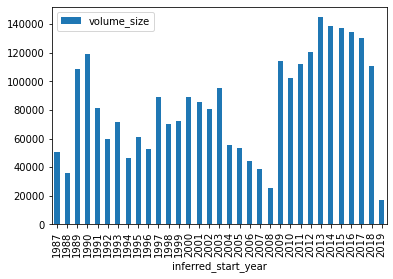
Or use Altair to plot the data:
import altair as alt
# Convert the inferred start year to a datetime object
humanist_vols['inferred_start_year'] = humanist_vols['inferred_start_year'].astype(str) + '-01-01'
humanist_vols['inferred_start_year'] = pd.to_datetime(humanist_vols['inferred_start_year'])
# Subset the data to only include the volume size and inferred start year so that our chart is not huge
chart = alt.Chart(humanist_vols[['volume_size', 'inferred_start_year']]).mark_bar().encode(
x='inferred_start_year:T',
y='volume_size',
tooltip=['inferred_start_year', 'volume_size']
)
We should produce a graph that looks like this:
Now we both structured our data and completed our exploratory analysis. But one remaining issue is how could we start to ask questions about the content of our text data from the listserv? What patterns and themes are there in the text? That’s where text analysis comes in!
Text Analysis of Cultural Data
One of the main ways we can structure our Humanist listserv data is by undertaking something called text analysis. This is a very broad term for a whole set of practices and overlapping disciplines and fields, some of which are shown in this figure below:

But again this figure has its limits. For example, data mining is something that Library & Information Sciences undertakes, and databases are used across these domains.
Rather than trying to define text analysis as a whole, I find a more helpful distinction is talking about Information Extraction vs Information Retrieval.
Information Retrieval (IR):

- Goal of finding relevant documents for user’s needs/queries (eg. Google)
- Often used for text classification of documents
- Can be done without “understanding” syntax and treating documents as “bag of words”
Information Extraction (IE)

- Goal of extracting specific features from documents
- Focused on linguistic analysis of textual features
- Requires both syntactic and semantic analysis
Today we will be focusing on the first category of these two categories, Information Retrieval, and next week we will dig into Information Extraction.
What is Information Retrieval?
According toWikipedia, Information Retrieval (or IR) was first theorized in the 1940s:
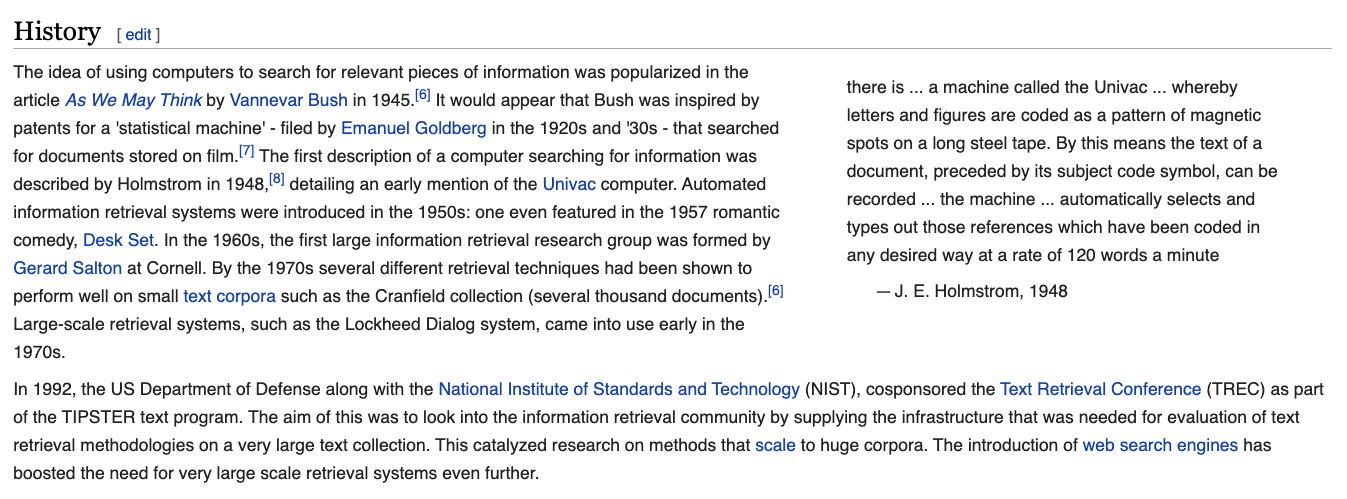
Information retrieval is strongly tied to the historical development of search engines and the basic goal is to find relevant documents for a user’s query. To do that though requires parsing textual information and finding patterns in the text.
One way we can do that is with simple counting of words and the frequency they appear across a text.
In our example, we could start counting words that appear in our email logs. Going back to our earlier readings (remember Louis Milic!), we could try and compare the rate that humanities computing appears compared to digital humanities that we first explored in the Google Ngram Viewer, demonstrated below.
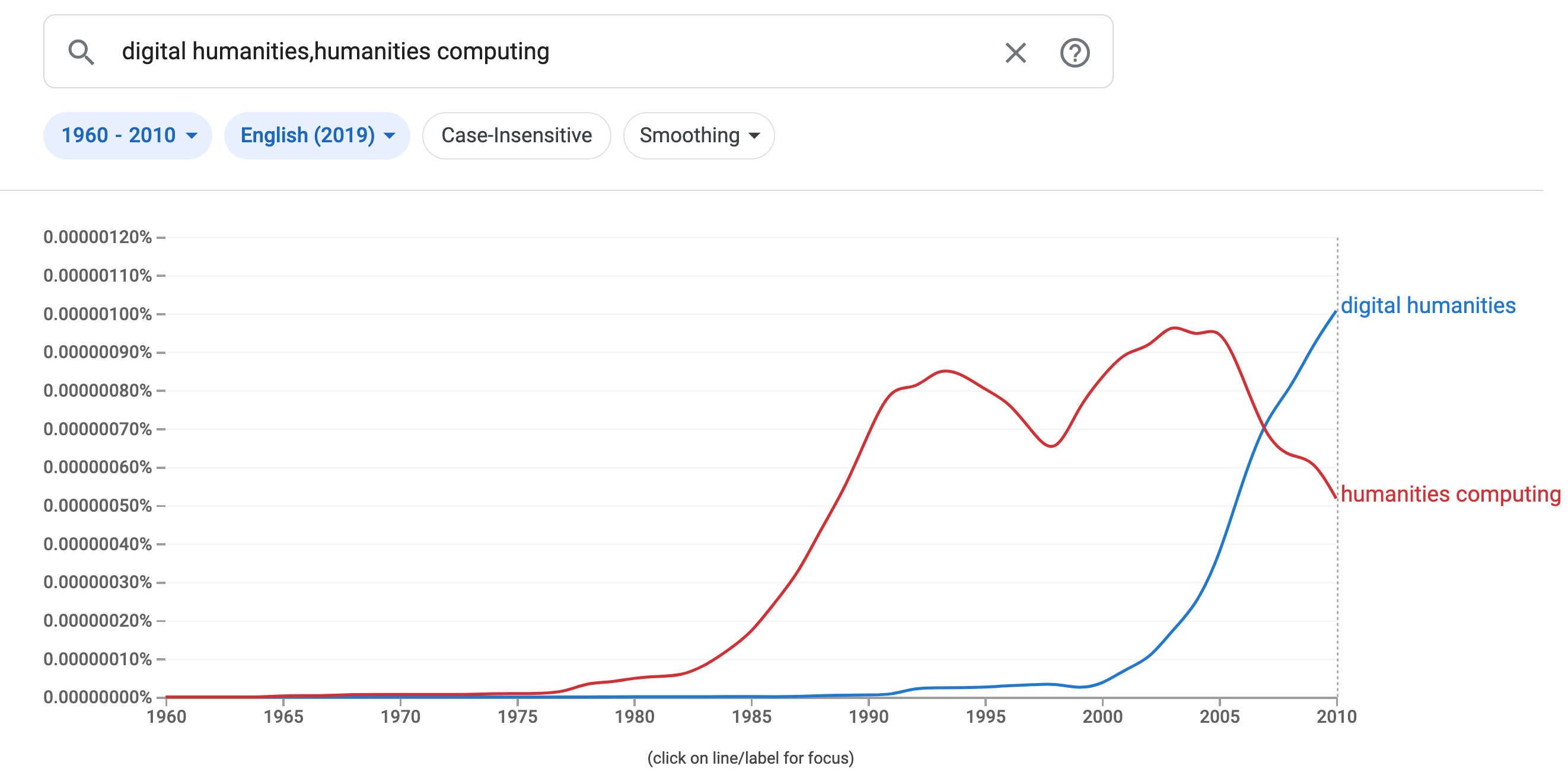
We can do a similar experiment in this listserv dataset. First we need to figure out how we can count strings in Pandas. We can do this by using the count method.
# Count the number of occurrences of each word
humanist_vols['humanities_computing_counts'] = humanist_vols['text'].str.count('humanities computing')
humanist_vols['digital_humanities_counts'] = humanist_vols['text'].str.count('digital humanities')
Now we can plot the data.
# Plot the data
humanist_vols[['humanities_computing_counts', 'digital_humanities_counts']].plot()
Which produces the following graph:

In Class Exercise
Our graph above technically shows us the frequency of the words humanities computing and digital humanities across the Humanist listserv dataset. But it doesn’t format dates correctly or have interactivity. So how could we recreate this graph using Altair?
As a hint, think about the fact that Altair requires you to specify your x and y axis and then you can add a tooltip to show the data or color to distinguish categories.
Also in data analysis, you will often need to transform your dataset from wide to long and long to wide (that is adding more rows vs more columns). Pandas has a number of ways to do that, and you can read more about it here https://pandas.pydata.org/docs/user_guide/reshaping.html#reshaping-by-melt.
Text Analysis with Python
Now we’ve officially done our first foray into text analysis 🥳!
So far we’ve just been working with Pandas, but in Python, there exists a few libraries specifically designed to work with text data.
-
SPACY https://spacy.io/
-
SCIKIT-LEARN https://scikit-learn.org/stable/
Each of these libraries has its own history, and some of what they provide overlaps. Here’s a helpful chart outlining some of their pros and cons.
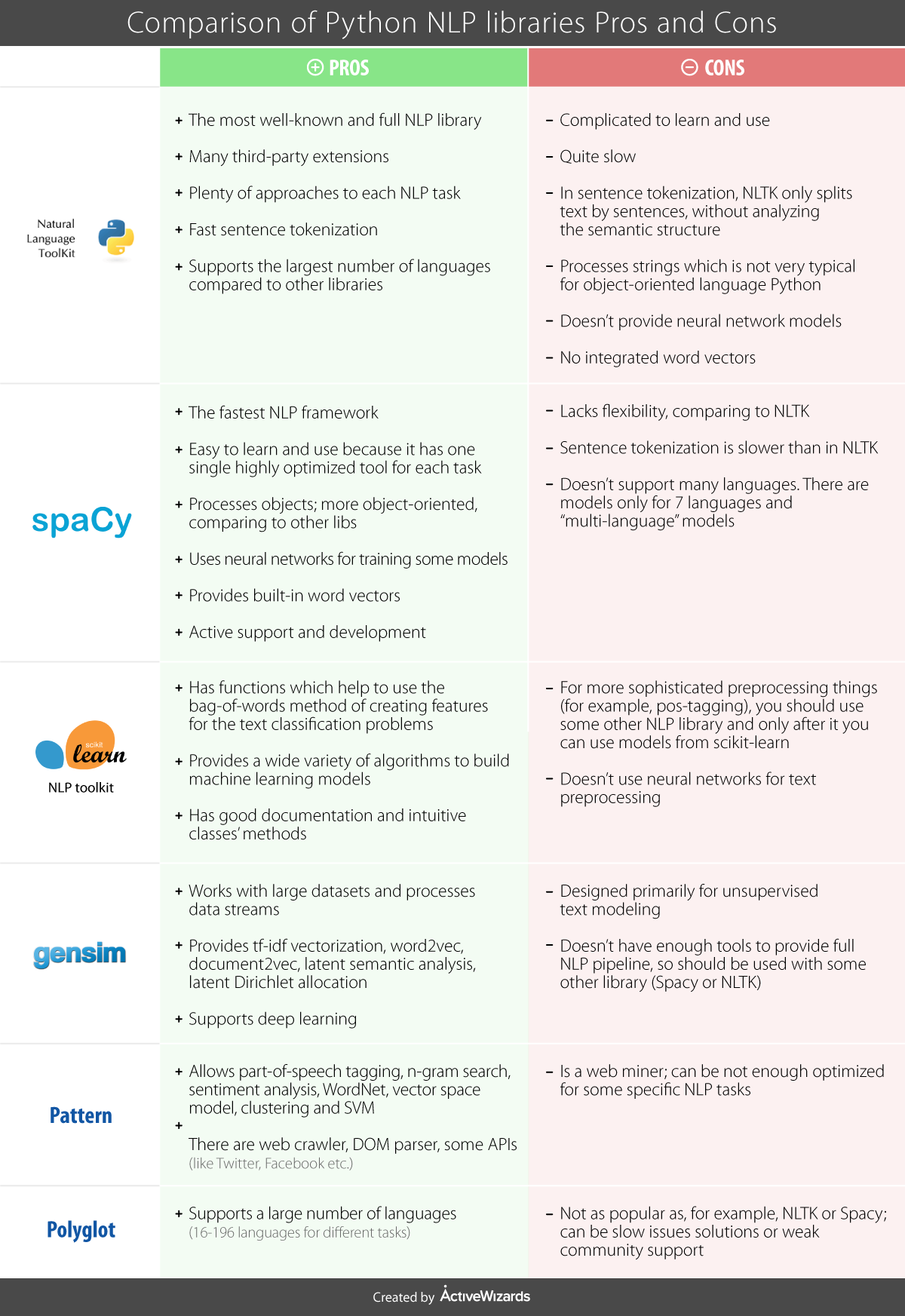
Ultimately, which library you choose to use depends on what you want to do with your data, but there’s some general principles for text analysis that you should consider regardless of method.
Word Counts and Zipf’s Law
Today we are going to start with the basics of text analysis: word counts and one of the older libraries, NLTK.
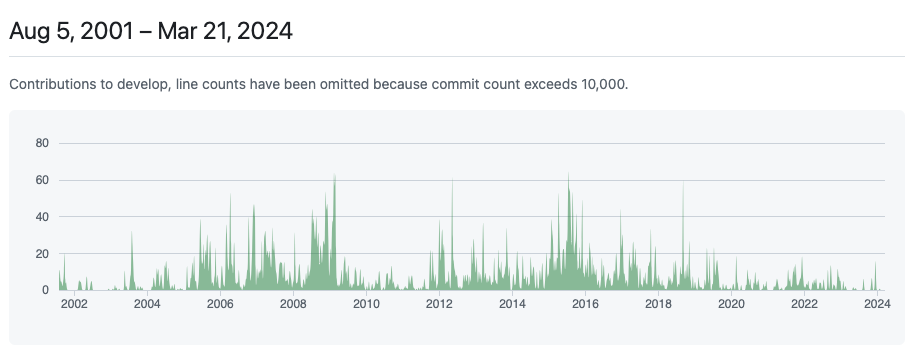
NLTK was first created in the late 1990s by Steven Bird and Edward Loper at the University of Pennsylvania. It was initially created to further research in corpus linguistics and natural language processing, but has since become a popular tool for text analysis in the humanities. In many ways, it comes out of a similar moment as the history of information retrieval and search engines, and has a similar goal of making text analysis more accessible.
The library NLTK has a helpful built in Class called FreqDist that takes a list of words and outputs their frequency in a corpus http://www.nltk.org/api/nltk.html?highlight=freqdist
Let’s try it out with a subset of our data. (Remember to install nltk).
from nltk import word_tokenize
from nltk import FreqDist
tokens = FreqDist(sum(humanist_vols[0:2]['volume_text'].map(word_tokenize), []))
tokens.plot(30)
We should get a graph that looks like this:
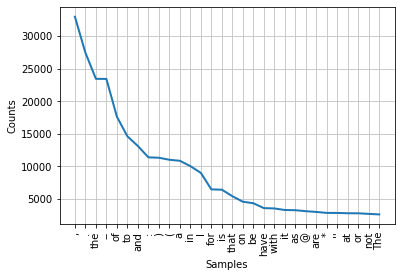
In this graph, if we had used all the words we would see this trend continue, like in the graph below.

This is “Zipf’s law:” the phenomenon means that the most common word is twice as common as the second most common word, three times as common as the third most common word, four times as common as the fourth most common word, and so forth.
It is named after the linguist George Zipf, who first found the phenomenon while laboriously counting occurrences of individual words in Joyce’s Ulysses in 1935 (one of the earliest computing in the humanities projects!).
This is a core textual phenomenon, and one you must constantly keep in mind: common words are very common indeed, and logarithmic scales are more often appropriate for plotting than linear ones. This pattern results from many dynamic systems where the “rich get richer,” which characterizes all sorts of systems in the humanities. You can read more about the power of counting words here https://tedunderwood.com/2013/02/20/wordcounts-are-amazing/.
One of the key things to takeaway from understanding the distribution of words in a text is that this can help us answer different types of questions in the humanities. For example, if we use high frequency words we can often identify the authorship or style of a text, and if we use low frequency words we can often identify the topic or genre of a text.
While we will discuss more of this topic and genre identification of texts, we won’t be covering authorship attribution so if you want to learn more I would highly recommend taking a look at François Dominic Laramée, “Introduction to stylometry with Python,” Programming Historian 7 (2018), https://doi.org/10.46430/phen0078. Stylometry is the formal name for this type of analysis and it is a both a popular method for working with cultural data and one with a longer history. For example, in the 1960s the authorship of the Federalist Papers was determined using stylometry.
Tokenization
To start getting into text analysis, we need to start thinking about how we can break up our text into words. In the field of corpus linguistics, the term “word” is generally dispensed with as too abstract in favor of the idea of a “token” or “type.” Breaking a piece of text into words is thus called “tokenization.”
There are, in fact, at least 7 different choices you can make in a typical tokenization process.
- Should words be lowercased?
- Should punctuation be removed?
- Should numbers be replaced by some placeholder?
- Should words be stemmed (also called lemmatization).
- Should bigrams or other multi-word phrase be used instead of or in addition to single word phrases?
- Should stop-words (the most common words) be removed?
- Should rare words be removed?
Any of these can be combined: there at least a hundred common ways to tokenize even the simplest dataset.
We can try these out with our humanist_vols dataset. For example, would we get a different number of counts if we lowercased our words?
# Count the number of occurrences of each word lowercased
humanist_vols['lowercase_humanities_computing_counts'] = humanist_vols['volume_text'].str.lower().str.count('humanities computing')
humanist_vols['lowercase_digital_humanities_counts'] = humanist_vols['volume_text'].str.lower().str.count('digital humanities')
# Plot the data
humanist_vols[['lowercase_humanities_computing_counts', 'lowercase_digital_humanities_counts', 'humanities_computing_counts', 'digital_humanities_counts']].plot()
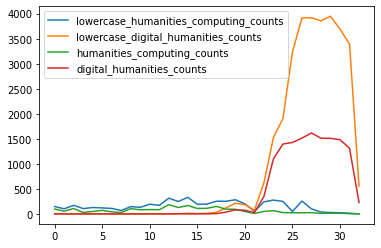
We can see that actually lowercasing words leads to many more matches since all we are doing is trying to match exact patterns and upper and lower case represent differing patterns. While we could use the replace() method for removing punctuation, some of the other approaches listed above require more attention. Let’s dig in!
Lemmatizing/Stemming
Lemmatizing and Stemming are both ways of reducing words to their root form to make them more normalized for analysis. Lemmatizing is the process of reducing words to their base form, while stemming is the process of reducing words to their stem, demonstrated in the figure below:

The NLTK library we used for FreqDist also comes with stemmers and lemmatizers.
import nltk
from nltk.stem import PorterStemmer
porter = PorterStemmer()
Now to use these we need to apply them to each of the rows in our DataFrame. We could do this with a for loop, but it’s more efficient to use the apply() method. To try this out, let’s work on a subset of our humanist_vols dataset.
subset_humanist_vols = humanist_vols[0:2]
def stem_words(row):
stemmed_words = ''
for token in row.split(' '):
stemmed_words += porter.stem(token) + ' '
return stemmed_words
subset_humanist_vols['stemmed_text'] = subset_humanist_vols.volume_text.apply(stem_words)
print(subset_humanist_vols[0:1]['stemmed_text'].values)
This will print out a large text string with the stemmed words. We can see what the first email looks like when it is stemmed:
from: mccarty@utorepas
subject:
date: 12 may 1987, 23:50:02 edt
x-humanist: vol. 1 num. 1 (1)
thi is test number 1. pleas acknowledge.
And compare it to the original:
From: MCCARTY@UTOREPAS
Subject:
Date: 12 May 1987, 23:50:02 EDT
X-Humanist: Vol. 1 Num. 1 (1)
This is test number 1. Please acknowledge.
We notice that stemming lowercased the words, but did not remove the punctuation. It also stemmed the words so that there is less variation in the words.
But let’s talk about the code above, and explain how we are doing this. To help make sense of everything, I’ll show the same code written as a for loop below:
stemmed_column = []
for index, row, in subset_humanist_vols.iterrows():
stemmed_words = ''
for token in row.volume_text.split(' '):
stemmed_words += porter.stem(token) + ' '
stemmed_column.append(stemmed_words)
subset_humanist_vols['stemmed_text'] = stemmed_column
So rather than having a function that takes a row as an argument, we are using a for loop to iterate over the rows. We are first creating an empty variable called stemmed_words and then we are splitting the text column into tokens and then iterating over each token. To do stemming or lemmatizing or many other text analysis methods, you need your words as tokens rather than a giant string. In this example, we are simply splitting on spaces, but there are many other approaches to this problem.
Once we have our tokens we then pass them to the porter.stem() method to stem them. We then append the stemmed words to our stemmed_words variable. Finally we append the all the stemmed words to the stemmed_column variable and then add that back into our DataFrame outside of the for loop.
So let’s compare this to our apply method:
def stem_words(row):
stemmed_words = ''
for token in row.split(' '):
stemmed_words += porter.stem(token) + ' '
return stemmed_words
subset_humanist_vols['stemmed_text'] = subset_humanist_vols.volume_text.apply(stem_words)
Here we have a function called stem_words that takes a row of our DataFrame, and then does the similar split to tokens and then stem and adding to stemmed_words. Instead of appending to a list though we are returning stemmed_words on each iteration and assigning it directly to our DataFrame in a new column.
You’ll notice that unlike in our for loop we write row.split() instead of row.text.split(). This is because we are doing the apply directly on the text column. We could also use apply to access all the columns in our DataFrame with the following change:
def stem_words(row):
stemmed_words = ''
for token in row.volume_text.split(' '):
stemmed_words += porter.stem(token) + ' '
return stemmed_words
subset_humanist_vols['stemmed_text'] = subset_humanist_vols.apply(stem_words, axis=1)
In changing subset_humanist_vols.text.apply(stem_words) to subset_humanist_vols.apply(stem_words, axis=1) we are now performing apply on all the columns of the DataFrame, row by row. The biggest thing to remember with apply is that you need to pass in the name of the function you want to run into the apply method. You can read more about the apply method https://pandas.pydata.org/docs/reference/api/pandas.DataFrame.apply.html.
Finally you might get an error when you run this code,
SettingWithCopyWarning:
A value is trying to be set on a copy of a slice from a DataFrame.
Try using .loc[row_indexer,col_indexer] = value instead
See the caveats in the documentation: https://pandas.pydata.org/pandas-docs/stable/user_guide/indexing.html#returning-a-view-versus-a-copy
subset_humanist_vols['stemmed_text'] = subset_humanist_vols.text.apply(stem_words)
That’s a common Pandas error that has to do with how we’re adding new data to our DataFrame. There’s a few different solutions listed here https://stackoverflow.com/questions/20625582/how-to-deal-with-settingwithcopywarning-in-pandas but for ease, I normally just suppress this warning with the following code:
import pandas as pd
pd.options.mode.chained_assignment = None # default='warn'
In Class Exercise
How might we try and rework our stemming code to work with lemmatizing?
First we’ll need to import the right libraries.
from nltk.stem import WordNetLemmatizer
nltk.download('wordnet')
nltk.download('omw-1.4')
wordnet_lemmatizer = WordNetLemmatizer()
Now try and create a function called lemmatize_words that takes a row as an argument and returns a string of the lemmatized words.
TF-IDF
So far we have been focused on counting and cleaning our textual data, but we could also try some more complex Information Retrieval techniques. One popular approach is an algorithm called Term Frequency - Inverse Document Frequency or TF-IDF. TF-IDF was first proposed in a 1972 paper by Karen Spärck Jones under the name “term specificity” and was later named TF-IDF by Steve Robertson in 1976. The algorithm is used to determine the importance of a word in a document relative to a collection of documents. The algorithm is based on the idea that a word is important if it appears frequently in a document, but infrequently in the rest of the documents in the collection.
The reason TF-IDF is so popular is because it is intended to surface terms that are distinctive across as set of documents (or a corpus). Often times with word counting you get lots of high frequency words (remember Zipf’s law) but these words aren’t always helpful if you are trying to understand the concepts within the text. High frequency words are more useful for author attribution.
So the way TF-IDF works is the following operations as visualized in this diagram:

To break this down into code it really looks like the following:
term_frequency = number of times a given term appears in document
inverse_document_frequency = log(total number of documents / number of documents with term) + 1*****
tf-idf = term_frequency * inverse_document_frequency
So let’s try it out! We could write this with plain Python, but we can also install the scikit-learn library with the following code pip install sklearn. We can then use the code from the Programming Historian lesson linked above to get the following:
# Let's try TF-IDF. This code is from the PH Tutorial linked above
# Import the TfidfVectorizer from sklearn.feature_extraction.text
from sklearn.feature_extraction.text import TfidfVectorizer
#save our texts to a list
documents = subset_humanist_vols.volume_text.tolist()
#Create a vectorizer
vectorizer = TfidfVectorizer(max_df=.7, min_df=1)
The documentation for the TfidfVectorizer is available here https://scikit-learn.org/stable/modules/generated/sklearn.feature_extraction.text.TfidfVectorizer.html and we can see what all these parameters mean. In particular, take a look at max_df and min_df. These parameters control how much frequency a word needs to be in a document to be included in the vocabulary. In our case we want to include words that appear in more than 70% of the documents, but also exclude words that appear in fewer than one document.
Now we need to fit our emails to the vectorizer. We can do this with the following code:
# Fit the vectorizer to our documents
transformed_documents = vectorizer.fit_transform(documents)
# Now get the top features for each document
transformed_documents_as_array = transformed_documents.toarray()
dates = humanist_vols.inferred_start_year.tolist()
tfidf_results = []
for counter, doc in enumerate(transformed_documents_as_array):
# construct a dataframe
tf_idf_tuples = list(zip(vectorizer.get_feature_names_out(), doc))
one_doc_as_df = pd.DataFrame.from_records(tf_idf_tuples, columns=['term', 'score']).sort_values(by='score', ascending=False).reset_index(drop=True)
one_doc_as_df['inferred_start_year'] = dates[counter]
tfidf_results.append(one_doc_as_df)
Once that is done we can save our results to a new DataFrame and explore the top unique terms
tfidf_df = pd.concat(tfidf_results)
tfidf_df = tfidf_df.sort_values(by=['score'], ascending=False)
tfidf_df.head(10)
You should see a lot of http. To get a better sense of let’s try taking the 200 rows of this tfidf_df but only keeping the unique terms. We can do that with the unique method in Pandas.
print(tfidf_df[0:200].term.unique())
Which should produce this list:
['2007' 'digitalhumanities' 'ninch' '2004' 'utorepas' 'bitnet' 's16382816'
'onlinehome' 'esmtp' 'joyent' 'amico' '1007' 'gopher' 'fqs' 'barracuda'
'2018' 'doi' 'woodward' 'epas' 'xxx' 'elra' 'ruhc' 'gants' '2012'
'outbound' '2015' '2009' '2016' 'mccarty_at_kcl' '3dx' 'messagelabs'
'aaisp' '2011' 'ichim99' 'vax' '2017' 'arundel' 'ippe' 'archiver' '2010'
'2013' 'spam' 'saddam' '005' '5801' 'ccreegan' 'dhhumanist' '2014' 'helo'
'wmccarty' 'aes256' 'astra' 'tocs' 'cest' 'hforums' 'lemme' 'wikipedia'
'fludd' '8080' 'uottawa' 'ecu' 'wlm' '0558' 'kis' 'google' 'postfix'
'prolog' 'kraft' 'bounces' 'spf' 'qs' 'penndrls' 'tambovtsev' 'acadvm1'
'mimeole' 'asg' 'hums' 'b7' '2784' 'riao97' 'infobits' 'ceth' 'brownvm'
'lachance' '441495' 'ugl' 'dhe' 'emfw4' 'proofpoint' 'hasselmo' '7848'
'e9' '2980' 'hussein']
Some of these terms are pretty meaningless and we might want to clean them out, but some like prolog or google look promising. This could open up a whole new set of questions for our dataset. For example, we could try and compare the frequency of prolog and google across the dataset to see if there are any patterns.
Making It Count Homework
Now that we have an understanding of the basics of text analysis, we can try and apply these methods to the Humanist Listserv dataset. The main assignment for this week is to try and discover if there are any discourses that are distinctive of the early internet era versus the later web 2.0 era in the Humanist Listserv dataset. Web 2.0 is a term that was first coined in 1999 by Darcy DiNucci and then popularized by Tim O’Reilly in 2004. It refers to the shift from static web pages to dynamic and user-generated content. The early internet era is a bit more difficult to define, but we could say it starts in the 1980s and ends in the late 1990s.
While this assignment is open ended, there’s a few things you’ll need to complete it. First, make sure you have the Humanist listserv dataset and that you have dates associated with each volume. Also if you previously save a subset of the dataset, try rerunning the code to use the whole dataset.
Second, would highly recommend using TF-IDF to help identify what is distinctive of these two time periods. You can use the code from the tutorial above to help you get started. You may also chose to use other Python libraries or methods, though I would recommend starting with TF-IDF. Part of this assignment is thinking about what we mean by “distinctive” and “discourse”, and how we can use computational methods to help us answer these questions. You could for example experiment with lemmatization or stemming to see if that changes your results, or you could try different hyper-parameters for TF-IDF.
Finally, you’ll need to visualize your results, and while you’re welcome to use any library, I would recommend either using Pandas plot or Altair. You’re welcome to work in either a Python script or Jupyter notebook, though I would recommend starting in a Jupyter notebook.
Because of the size of the dataset, you may want to try and use a subset of the data to start with. You can do this with the sample method in Pandas. For example, to get a random sample of 100 rows you could use the following code:
humanist_vols.sample(100)
You’ll also want to make sure that you aren’t trying to push up to GitHub any file larger than 50MB. To ignore those files, be sure to add them to your .gitignore file. You can read more about how to do that here https://docs.github.com/en/github/using-git/ignoring-files and in our previous lesson. And you can always ask GitHub Co-Pilot or the instructors for assistance.
Once completed, push up your work to GitHub in a folder called making_it_count and share the link in this GitHub discussion https://github.com/ZoeLeBlanc/is310-computing-humanities-2024/discussions/8